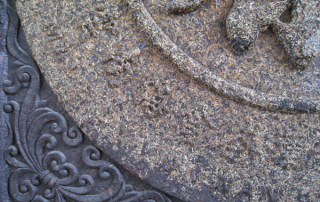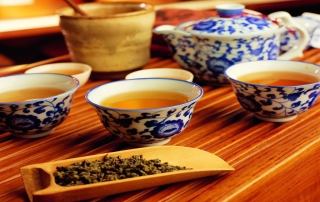A Beginner’s Guide to Green, White, and Yellow Tea
I have to be honest. I find green tea (lǜchá 绿茶) the least interesting type of tea (unless it is Jasmine tea which is divine). Most of the world, however, does not agree. In China, the birthplace of tea (Camellia sinensis), 70% of the tea produced is green tea. Traveling throughout China you will notice most people walking around with a thermos of green tea.
Green tea is unoxidized, minimally processed tea. It is sun-dried, steamed, or dried in a wok over low heat, and rubbed into shape. It is best used fresh; within 6 months or so. White tea (bái chá 白茶) is even less processed than green tea. Tender leaves and unopened buds are allowed to wither in the sun and to maintain their natural shape. The resulting tea leaves have a gray/white hue and when brewed produce a light green tea liquid. Yellow tea (huáng chá 黄茶) is made by piling the rubbed tea leaves and changing the texture quality of the leaves under carefully controlled heat and humidity; a process known as Menhuang. The resulting tea leaves have a yellow hue and the resulting brewed tea liquid is noticeably yellow.
Health Benefits of Green Tea, White, and Yellow Tea
All three are high in antioxidants compared to other types of tea. They are cooling and best during summer or hot weather and for hot, inflamed conditions. They promote digestion, alleviate some types of headache, remove toxins, and help allay the effects of greasy foods. White tea has the coldest thermal temperature and is used to clear heat and fever.
Taste of Green, White, and Yellow Tea
White tea has the most delicate fragrance and taste of all the teas. Green tea is characterized by a fresh, green, slightly bitter taste and aroma. Yellow tea has less fragrance than green tea and a sweeter taste.
Types of Green, White, and Yellow Tea
I recommend sampling tea from each category to find your favorite style(s).
There are over 60 varieties of Green Tea listed in Chinese tea books, and perhaps thousands lesser known. Some of the most well known varieties are Long Jing (Dragon Well), Zhu Ye Qing (Green Bamboo Leaf), Bi Luo Chun (Green Snail Spring), Lu’An Gua Pian (Lu’An Melon Seed Tea), Tai Ping Hou Kui (Peaceful Monkey Leader), and Mao Jian (Hairy Tips). Long Jing tea is a good place to start.
White Tea is mainly produced in Fuding, Fujian Province. Varieties include Baimudan (White Peony), Baihao Yinzhen (White Hair Silver Needle), and Shoumei.
Yellow Tea varieties include Mengding Huangya (Yellow Buds), Huoshan Huangya (Yellow Buds), and Huoshan Huangdacha (Big Yellow Tea).
Scented teas process the tea leaves with flowers. This includes: Jasmine Tea, Jasmine Pearl Tea, Orchid Tea, and Performance Tea (green tea leaves are bound with beautiful flowers that unfurl n hot water). I recommend trying Jasmine Tea as one of your first experiences with green tea.










